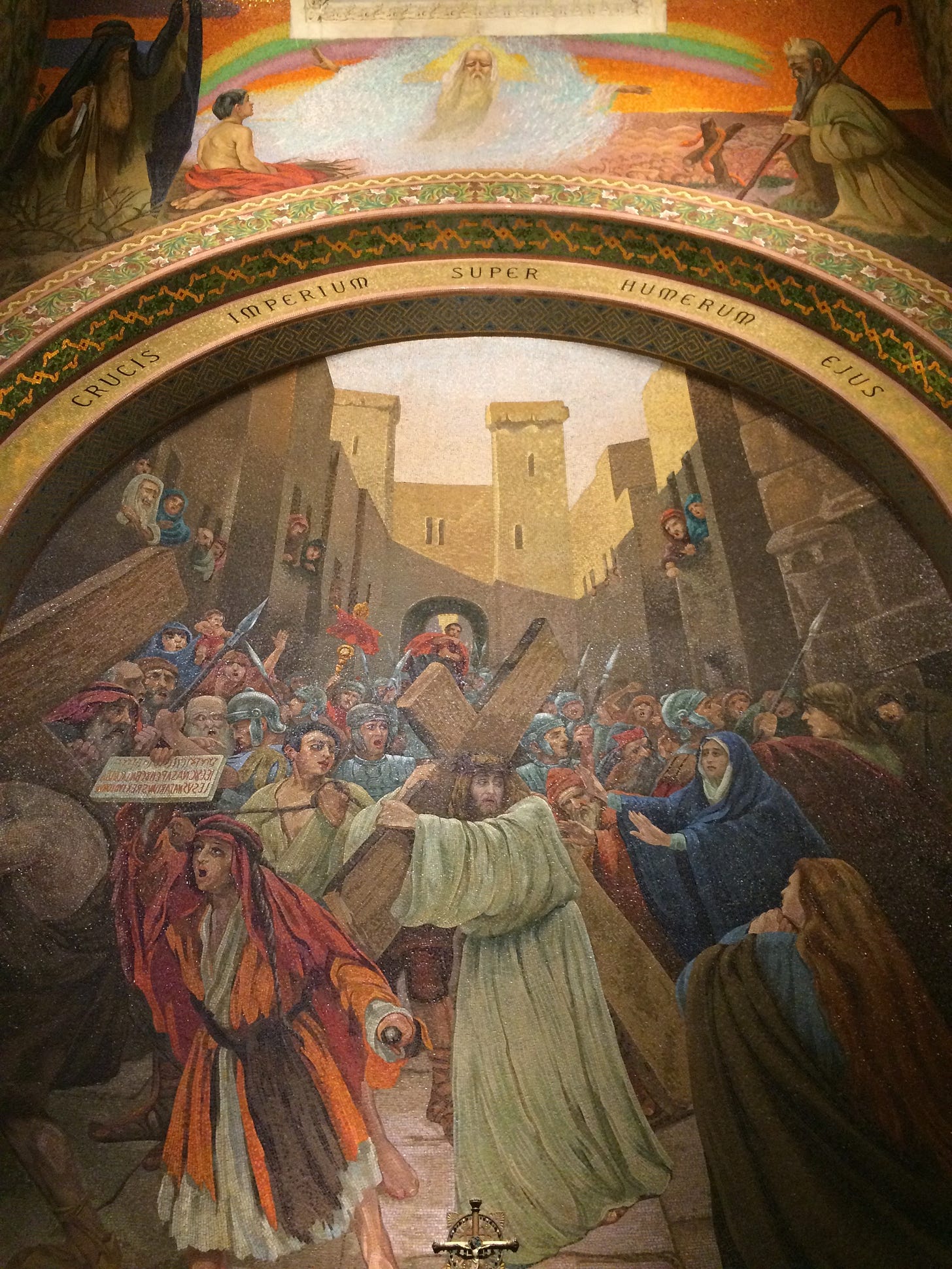Above the archway, God the Father looks out from the glory cloud, and is surrounded by the rainbow of peace. To His right, Abraham prepares to offer his beloved son in sacrifice, and to His left, Moses looks upon the bronze serpent lifted up on the wood of a tree. Each of these Old Testament images was a type of Christ, the Beloved Son offered to the Father by being lifted up on the wood of the Cross to heal people from the wounds of their sins.
The main mosaic itself is the most frenetic of the whole series. Crowds rush upon one another as they try to see Jesus, some even leering out of windows above. Whether they gather to mock or adore, we don’t always know. The town crier goes before Jesus to tell all and sundry of what this “criminal” is guilty. Rome looks on from the back of the crowd. It is unclear if this is Pilate witnessing what he cowardly allowed from afar or a centurion ensuring Christ reaches His destiny. In either case, his distance from Jesus says much.
Mary and Mary Magdalene are at the right, distinct in blue tones and running up to Jesus to be with Him in His passion. The Lord, for His part, does not look angry, sad, or even overcome, though we can indeed see grief in His eyes as He looks upon His Sorrowful Mother. Saint Alphonsus would say that “their looks became as so many arrows to wound those hearts which loved each other so tenderly.”
Jesus, Who has power to lay down and take up His own life, has a silent majesty about Him, and His power radiates through the weakness of this moment. Unlike most in the image, He is dressed in white, a clear allusion to His pure sacrifice of a willing heart. The man to His right is also in white—perhaps he will become the Good Thief?
The phrase in the archway is intriguing, especially as it also shows the power of Christ in this scene. Isaiah the prophet wrote “cuius imperium super humerum eius.” We hear this line in translation perhaps most famously in Handel’s Messiah (in “For unto us a child is born”), wherein the choir sings “and the government shall be upon His shoulders.” Here in the archway, one word is changed in what appears to be a tragic Latin pun. Instead of cuius we have crucis. “The kingdom of the cross is upon His shoulders.”
What insight! It recalls what one Lenten hymn says: regnavit a ligno Deus—God reigned from the wood [of the cross]. This is also what it looks like to reign with Christ, to be part of His kingdom and reign. It is into this kingdom—the kingdom of the Cross—that we are invited, of which we are made members at baptism. That means that we too must carry the Cross, as Jesus Himself did, and as He so often commanded.
Do you carry the cross? Or is it laid aside like so many who professed to follow Christ, yet diabolically chose their own way instead of the Way of the Cross?



